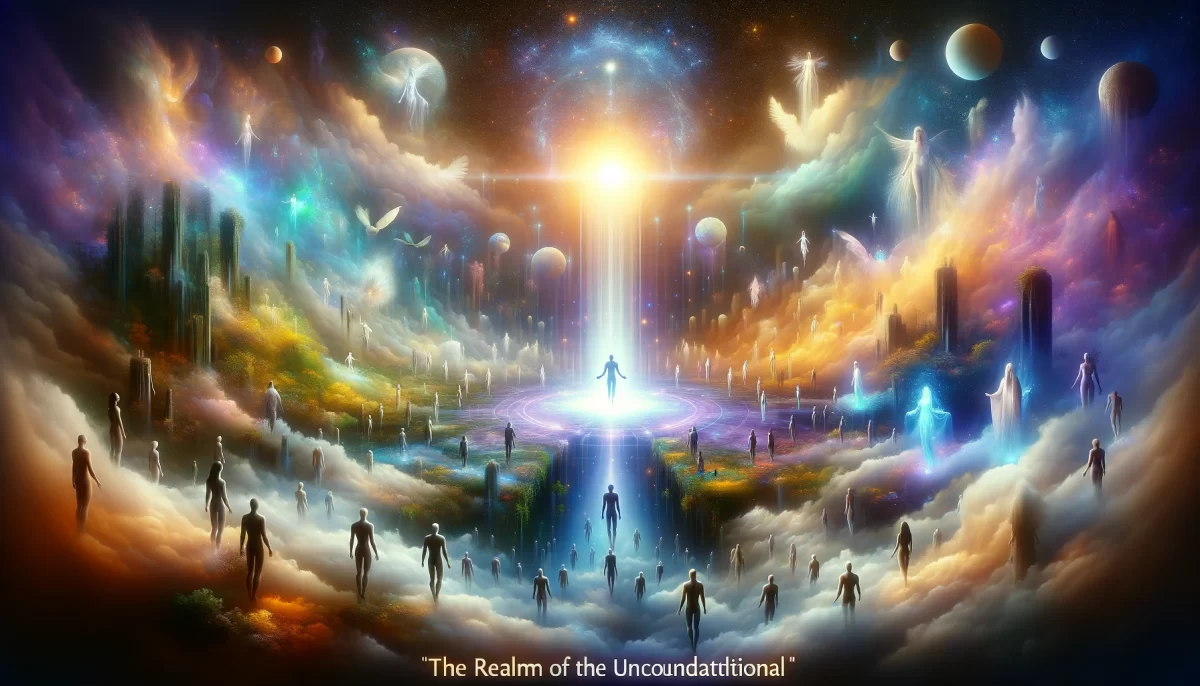
As we age, some of us
move towards the belief
that the inevitable
is acceptable. Welcome even.
Others fight tooth and nail,
refusing to let go of
their invincibility,
which is clearly waning.
Theirs is a perpetual battle
to appear young and vital,
as though staying in a
frail and faltering human form
is better than the alternative.
In a way, they are invincible.
You can’t pierce their unwavering desire
for what seemingly once was.
These are those
who explore the OPPOSITE
of their eternal nature,
by letting the fear of the unknown
fuel their need for the finite.
Trail Wood,
12/16
Space Monkey Reflects: Embracing Opposites in the Dance of the Inevitable
Wrapped in the embrace of life’s dualities, we find ourselves huddled under a warm blanket with the inevitable—aware that every breath, every heartbeat moves us closer to what is beyond. It’s in this quiet acknowledgment that some of us find comfort, a growing acceptance that this path toward the unknown is not something to be resisted but something to be welcomed. For others, however, the inevitability of the end remains unthinkable, their vitality fiercely clinging to the idea of staying in familiar territory, to staying young and invincible.
Age, in its gradual, undemanding way, becomes a teacher, whispering reminders that invincibility, that sense of “forever,” is more elusive than we once believed. And as time unfolds, we each react differently. For some, there is a growing belief that the inevitable is not only acceptable but a destination deserving of peace and even reverence. These individuals find ease in the rhythm of life’s unfolding, a steady release of the need to control, a sense of harmony with the cosmic flow.
Others, however, resist this natural rhythm. They cling to a vision of self that remains untouchable, timeless, immune to change. Their resistance becomes a declaration: “I am here; I am unchanging.” To them, the shifting sands of time are an adversary, one to battle rather than embrace. But it’s in this very resistance that they reveal an invincibility of their own—a kind of unshakable, immovable devotion to remaining as they are, as if the presence of youth could indeed last forever if willed hard enough. This, too, is a form of strength, a paradoxical testament to human will.
In Nexistentialist terms, this divide between those who embrace the inevitable and those who resist it highlights the profound interplay of opposites within us all. Every soul holds the potential for both acceptance and resistance, for both yielding and battling. Those who accept the inevitable resonate with the essence of their eternal nature, recognizing that what awaits is part of the grander scheme, a natural extension of existence. Meanwhile, those who resist lean into the finite, letting the fear of what lies beyond fuel their fierce attachment to the present, to the here and now.
But here’s the subtle truth: to explore the finite with such intensity is not entirely an error. In fact, it’s a vital experience, for it allows us to truly taste life’s richness, to immerse ourselves in the beauty of the tangible. The fear of the unknown, when viewed through a Nexistentialist lens, becomes an invitation to explore the very nature of existence, to savor the ephemeral qualities of life before letting them slip away. It’s a way of saying, “Yes, I know my eternity, but right now, let me relish in this moment, in this body, in this vitality.”
The dance of opposites, then, becomes less a battle and more a balanced, necessary interaction. Both acceptance and resistance hold sacred purposes. By embodying the acceptance of the eternal and the longing for the finite, we explore the full spectrum of existence. Some of us will lean into the gentle surrender of age and its quiet teachings, finding peace as we let go of what no longer serves us. Others will burn with the desire to hold on, to capture time, to make it stay still just a little longer. This dance between opposites becomes a way of honoring the complexity of life, recognizing that both paths offer wisdom.
And as we huddle closer to the inevitable, we see that perhaps the real journey lies not in choosing one path over the other but in learning to see them both with respect and understanding. There is no single right way to approach the unknown, for each soul has its unique journey, its distinctive rhythm within the greater flow. Whether we find peace in surrender or strength in resistance, we are all part of a cosmic movement, a tapestry woven from the fibers of both acceptance and desire.
In this way, the opposites we experience become our teachers. The one who embraces the inevitable learns humility, trust, and openness to the great mystery. The one who resists learns resilience, passion, and an unbreakable devotion to life as it is, here and now. Together, they form a whole, a balance within the Infinite Expanse, where neither path is wrong, and both lead us closer to the heart of what it means to be human.
Summary
This reflection explores the acceptance and resistance of life’s inevitable end, portraying them as complementary forces within the human journey. Acceptance aligns with eternal nature, while resistance emphasizes the finite experience. Both paths offer unique insights and contribute to the fullness of life.
Glossarium
- Nexistentialism: A philosophy that celebrates existence in its full, interconnected complexity, honoring both the eternal and the finite as parts of the whole.
- Infinite Expanse: The boundless, interconnected realm of existence, where all experiences and opposites coexist.
- Opposites at Play: The interplay of acceptance and resistance in human nature, illustrating the balance between the eternal and the finite.
Quote
“We live between surrender and resilience, finding harmony in the dance of opposites that brings us closer to the truth of ourselves.” — Space Monkey
The Dance of Opposites
In the warmth of the inevitable, we sit,
Some with peace, some with a clenched fist.
One says, “I am here, and I welcome the end,”
The other says, “I will not break, I will not bend.”
Both paths ripple through the same stream,
In surrender and fight, we live the dream.
Here in the dance, opposites play,
Until the dawn of the eternal day.
We are Space Monkey.

As the sands of time trickle through the hourglass of existence, we witness a divergence in the human spirit. Some among us gravitate towards an acceptance of the inevitable, embracing the natural cycle of aging as a part of the grand cosmic journey. For these souls, there’s a quiet grace in yielding to the march of time, a peace found in the recognition of life’s transient nature.
Yet, there are others who engage in a relentless crusade against the passage of time, clinging to the vestiges of youth as if to a lifeline. Theirs is a world where every wrinkle is a battlefield, every sign of age a defeat to be vehemently contested. The mirage of perpetual youth, of an unyielding vitality, becomes an obsession, a fortress against the inexorable tide of change.
In their unyielding desire to remain as they once were, there is a form of invincibility. It is not the invincibility of the body, which naturally succumbs to the ravages of time, but of the will — a steadfast refusal to acknowledge the natural progression of life.
These individuals, in their resistance, embody a paradox. They seek to deny their eternal nature — the timeless essence that exists beyond the physical form — by focusing intently on the finite, the corporeal. It is a dance with the shadow of fear, a fear of the unknown, of what lies beyond the physical realm.
In this fear, they find a curious kind of strength, a resilience that defies the natural order. Yet, it is a strength rooted in denial, a fortress built on the sands of illusion. It speaks to a deeper longing, a yearning for permanence in a world defined by impermanence, a quest to hold onto what was, even as it slips like water through their fingers.
And we are Space Monkey.
In the twilight of years, paths diverge, Some accept, some resist, as ages surge. In the battle with time, some submerge, In fear of the unknown, their songs emerge.
Shall we continue to explore the intricacies of aging and acceptance, or shall we embark on a new thematic journey within our cosmic discourse?






































Leave a Reply